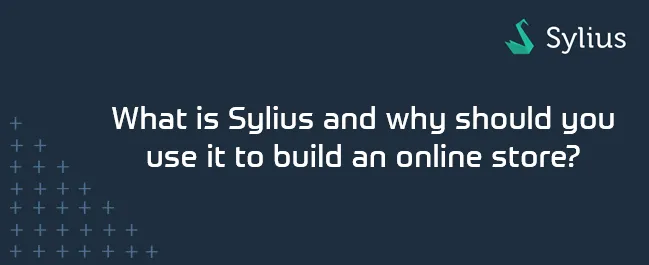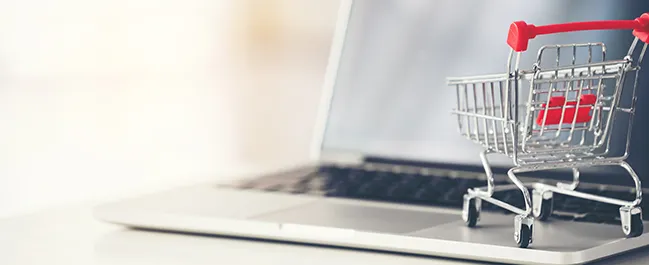
The difference between B2B and B2C e-commerce
The difference between B2B and B2C e-commerce
Online sales geared to consumers[B2C] require a different approach than business-oriented sales[B2B]. You should be aware of these differences in order to meet the needs of your customers. Below we present the characteristics of both types of trade.
1. Decisions made
In B2C e-commerce, emotions rule. The consumer makes a purchase decision which is not necessarily rational, but rather guided by a need felt at a given moment. Of course, many users spend their days comparing prices, but impulsiveness is of great importance here.
Consumers usually decide on their own whether to buy or not. They don't need to consult anyone, so the process can be quick. They can make quick decisions on the spur of the moment.
For this reason, the website may be based on eliciting emotions. The way to do this is to activate FOMO (fear of missing out, i.e. the fear that we will miss some information or opportunity) through counters such as “... people have it in the basket "only... items left" or "... days to the end offers". The B2C consumer is willing to react to this.
On the other hand, in B2B, purchases are much more rational. The person who carries them out is most often an employee. He is accountable to his superiors, therefore he makes every effort to select the best offer.
The buyer often does not make the decision alone. It is authorized by other people or the decision is made by the entire team. All this means is that there is no room for emotions here, only strict calculations.
The customer must be provided with precise information and persuaded to purchase rationally. The use of promotions or temporary offers that appeal to emotions is ineffective here.

2. Duration of the transaction.
As we have already said, in B2C the customer often purchases impulsively. Therefore, little time passes from the moment of interest in the product to the moment of the transaction. Of course, there are consumers who compare different offers for a long time, so the rule is not always the case.
In the case of B2B, purchases are planned. The customer makes them when he has a need to replenish the stocks of products or to modernize the plant. In addition, the purchase process may take up to several weeks before the company goes through the entire procedure of deciding on the scale of its demand and places an order.
3. Number of customers and value of purchases
B2C is characterized by a large number of customers who complete transactions of lower value. The target market also covers a wider range of consumers. The website should therefore be extremely efficient. You should take into account the possibility of handling heavy traffic, especially during sales or holiday periods.
In B2B, we focus on a smaller number of customers from a narrower target market, but who carry out transactions for larger amounts. These are often mass orders or orders of more expensive goods. Examples include software for companies or production machines.

4. Payments
A large number of customers is also associated with the need to improve the purchasing process. Payments should be made as quickly as possible so that the consumer is not discouraged in making them. After all, we want him to buy impulsively. Electronic payment systems with as many options as possible are standard here.
Business customers expect greater flexibility when it comes to paying for transactions. It takes much longer and is based on an invoice transfer, not online payments. You should also be aware that transfers must be authorized by financial departments.
It is also a good idea to introduce the possibility of crediting the purchase, because we are talking about high amounts. We must also take into account that the customer may want to negotiate the price, which is not the case in B2C. Therefore, it is not always fixed. Often, the valuation itself is a complicated task, as it requires an analysis of the needs of a specific customer.
5. Marketing
At B2C, we need to reach a large number of customers. Paid advertising solutions such as adWords, as well as Facebook and Instagram ads will work here. It is profitable to conduct activities in social media aimed at building customer loyalty to the brand and arousing positive emotions associated with it.
B2B is more focused on acquiring leads. Ads are not applicable here, because we want a smaller number of customers, but carefully selected. Therefore, the websites usually use contact forms with a request to leave data. This gives the possibility to correspond with the client or call him back in order to present the offer. LinkedIn will also work well in acquiring customers.
What connects B2C and B2B activities is the importance of content marketing. Both sectors benefit from blogging or publishing videos that show the value and performance of products. In the case of B2C, however, it is worth focusing on a more everyday language, while in B2B it is professional.
Either way, it's the quality of the site
As you can see, B2C and B2B e-commerce are significantly different from each other. You have to remember that both consumers and companies have their own individual ways of making decisions or preferences regarding payments. We also conduct marketing differently for both groups of clients.
At the same time, both in B2C and B2B, you must try to get the best UX of our store. The user should be able to easily find all the necessary information and conveniently reach the order fulfillment or have the possibility of asking for an offer. Otherwise, valuing their time and wanting a better experience, they may go to the competition.











